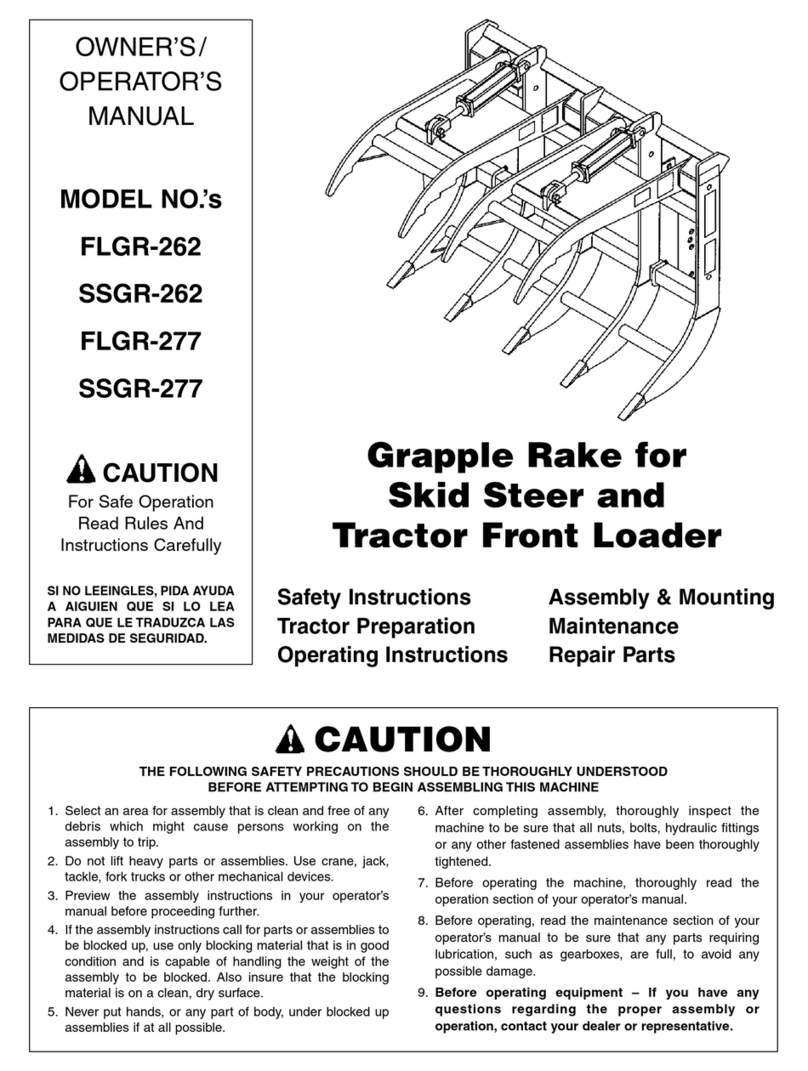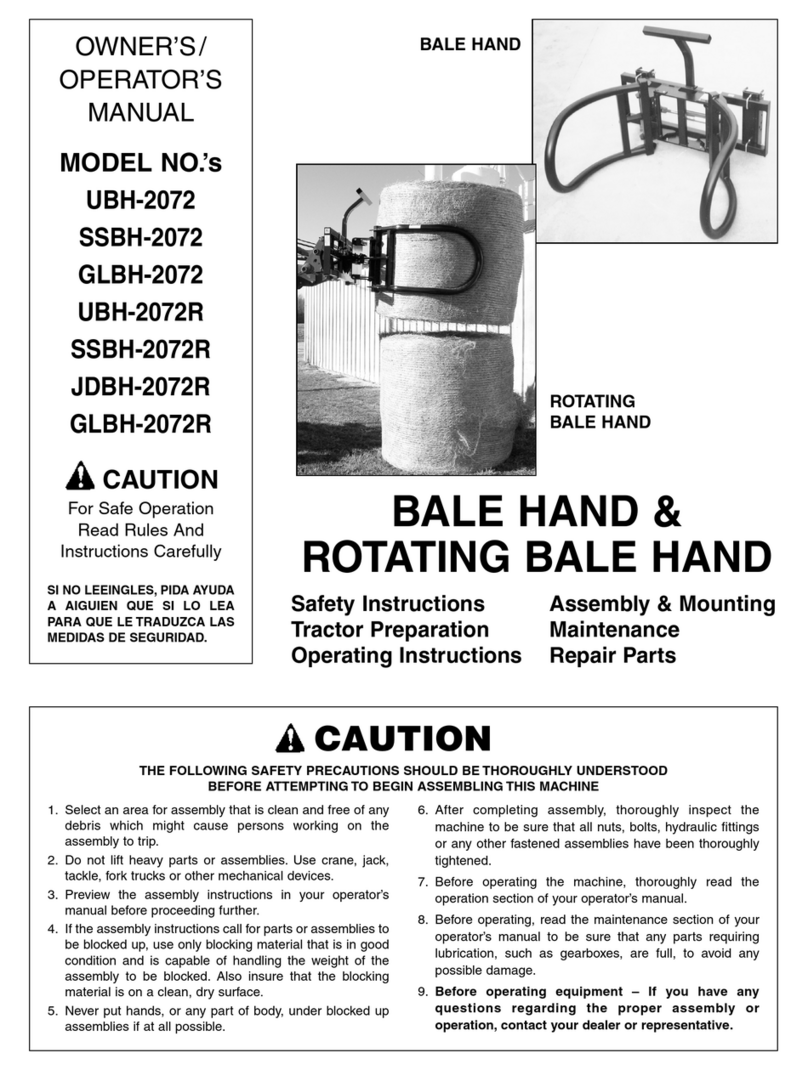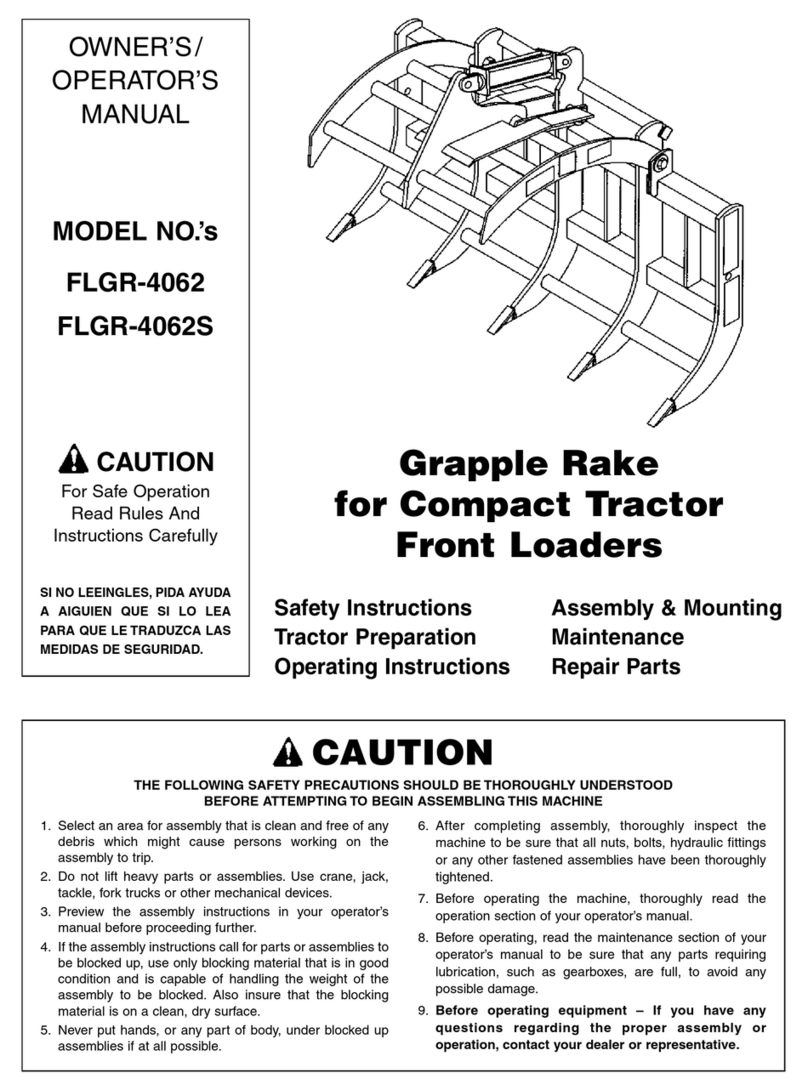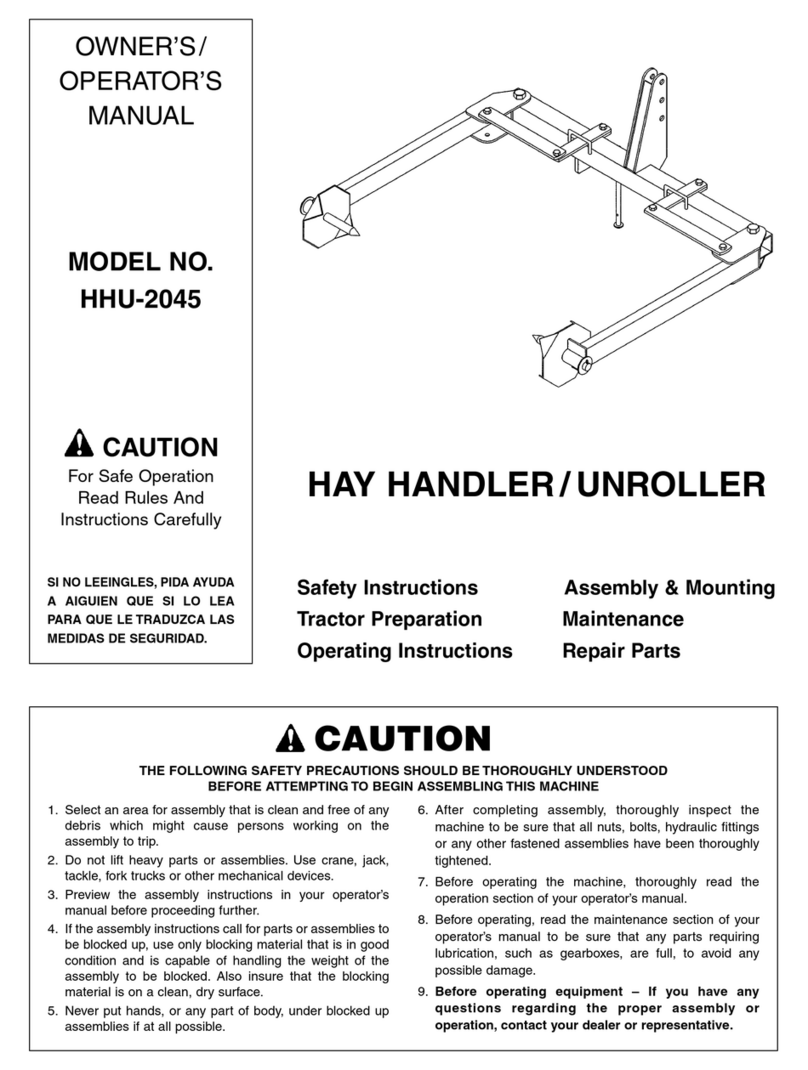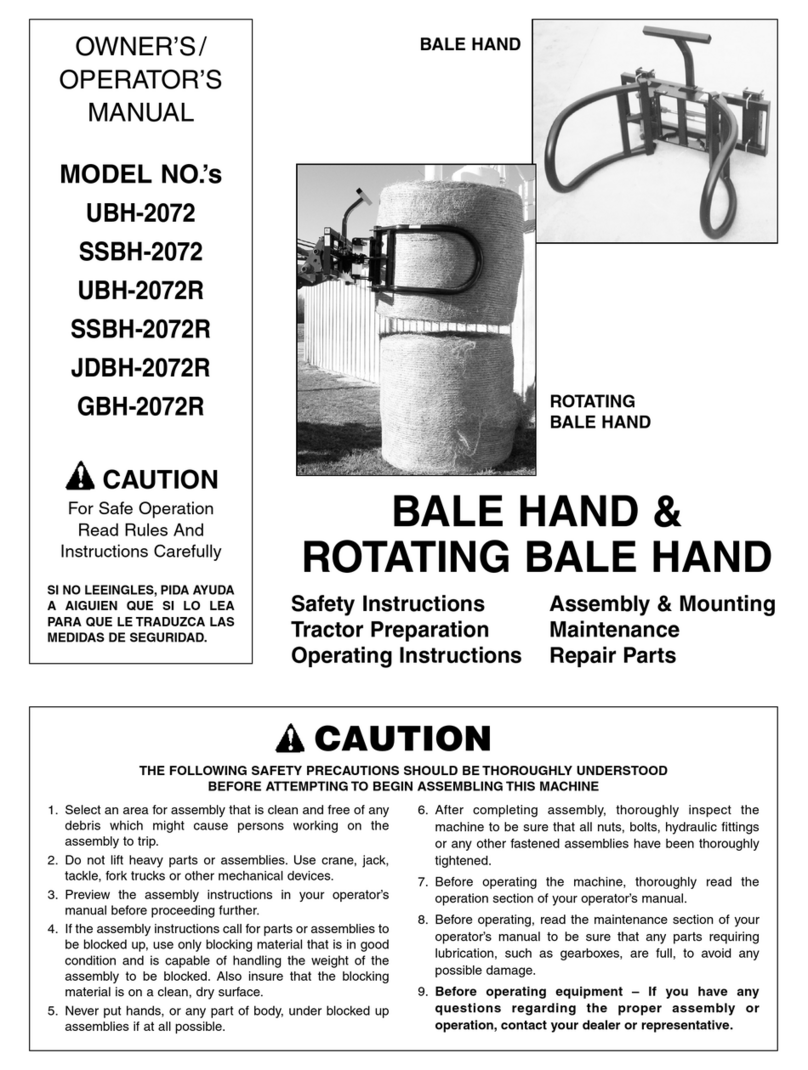
2
LIMITED WARRANTY
Worksaver warrants to the original purchaser of any new Grader Blade Model SSGB-%, that the equipment
be free from defects in material and workmanship for a period of TWELVE (12) MONTHS COMMENCING ON
THE DATE OF DELIVERY OF THE PRODUCT TO THE ORIGINAL PURCHASER.This warranty will apply if
notified to Worksaver, Inc.within thirty (30) days after such defect is discovered.
The warranty registration must be completed and returned to Worksaver, Inc.
Replacement or repair parts installed in the equipment covered by this warranty are warranted for ninety (90)
days from the date of purchase of such part or to the expiration of the applicable new equipment warranty
period, whichever occurs later.
Such parts shall be provided at no cost to the user during regular working hours. Worksaver reserves the right
to inspect any equipment or parts which are claimed to have been defective in material or workmanship.
This warranty is extended solely to the original purchaser of the product. Should the original purchaser sell or
otherwise transfer this product to a third party, this warranty does not transfer to the third party purchaser in
any way. There are no third party beneficiaries of this warranty.
DISCLAIMER OF IMPLIED WARRANTIES & CONSEQUENTIAL DAMAGES
Worksaver shall not be liable for any incident or consequential losses, damages or expenses, arising directly
or indirectly from the product, whether such claim is based upon breach of contract, breach of warranty,
negligence, strict liability in tort or any other legal theory.
Worksaver’s obligation under this warranty, to the extent allowed by law, is in lieu of all warranties, implied or
expressed, including implied warranties of merchantability and fitness for a particular purpose and any liabili-
ty for incidental and consequential damages with respect to the sale or use of the items warranted. Such
incidental and consequential damages shall include but not be limited to: transportation charges other than
normal freight charges; cost of installation other than cost approved by Worksaver; duty; taxes; charges for
normal service or adjustments; loss of crops or any other loss of income; rental of substitute equipment,
expenses due to loss, damage, detention or delay in the delivery of equipment or parts resulting from acts
beyond the control of Worksaver.
THIS WARRANTY SHALL NOT APPLY:
1. To vendor items which carry their own warranties, such as hydraulic cylinders, tires, and laser control
systems.
2. If the unit has been subjected to misapplication, abuse, misuse, negligence, fire or other accident.
3. If parts not made or supplied by Worksaver have been used in connection with the unit, if, in sole judge-
ment of Worksaver such use affects its performance, stability, or reliability.
4. If the unit has been altered or repaired outside of an authorized Worksaver dealership in a manner which,
in the sole judgement of Worksaver affects its performance, stability or reliability.
5. To normal maintenance service and normal replacement items such as gearbox lubricant, hydraulic fluid,
worn blades, or to normal deterioration of such things as hoses and exterior finish, due to use or exposure.
6. To expendable or wear items such as cutting edge, plow bolts, springs and other items that in the
company’s sole judgement is a wear item.
NO EMPLOYEE OR REPRESENTATIVE OF WORKSAVER IS AUTHORIZED TO CHANGE THIS
WARRANTY IN ANY WAY OR GRANT ANY OTHER WARRANTY UNLESS SUCH CHANGE IS MADE IN
WRITING AND SIGNED BY WORKSAVER’S SERVICE MANAGER, POST OFFICE BOX 100, LITCHFIELD,
ILLINOIS 62056-0100.
This warranty is subject to the warranty registration being submitted within sixty (60) days after
purchase. For warranty services, contact your selling dealer.






